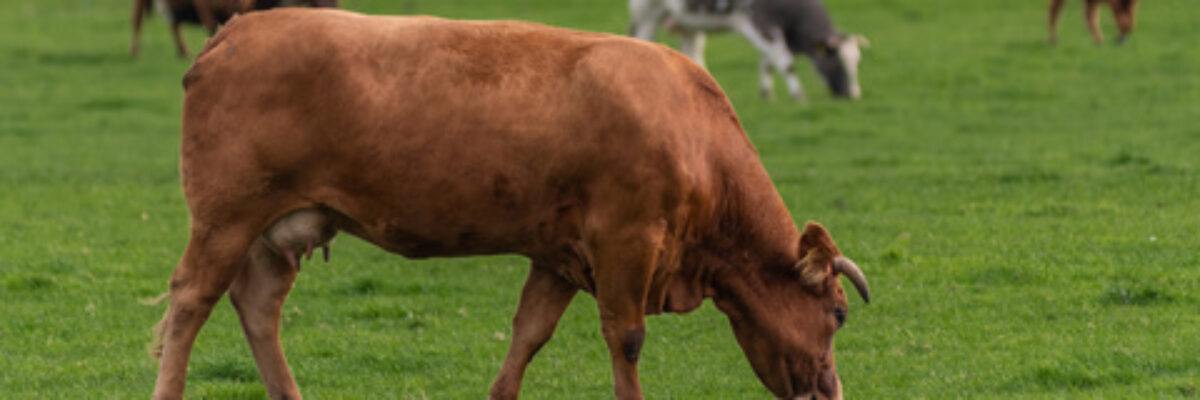Categories
Recent Posts
- Do these 7 things in spring pig breeding to reduce the number of pigs getting sick!
- Five ways to save money raising sheep!
- How to treat piglets without food? How do piglets lose weight without eating?
- In spring, the incidence of rumen food accumulation in cattle is high, pay attention to strengthen prevention and control!
- How to treat the fecal water of pig farms? These methods are worth learning
- What are the characteristics of black nose sheep? What food does black-nosed sheep not eat?
- Six things must be done to raise cattle in spring!
- What are the symptoms of cattle anthrax? Will cattle get sick after using anthrax vaccine?
- Summer is hot! How to prevent heatstroke and reduce the temperature of dairy cows?
- What is the reason for lack of manganese in cattle? What should cattle do if they lack manganese?
Which is better to feed cattle with raw meal or clinker?

Which is better to feed cattle with raw meal or clinker? Some farmers like to feed cattle with raw materials, while others like to feed cattle with cooked materials. They think that cooking the feed will help improve digestibility and nutritional value, but is this really the case? Which is better, raw meal or clinker
- What is raw material? What is clinker?
Raw meal refers to the use of corn, wheat, rice, soybeans and other processing by-products such as rice bran, bran, soybean meal, corn flour and other ingredients to feed cattle.
Clinker is to cook raw materials and then feed them to cattle. Many people think that it is conducive to digestion and sterilization.
Little did we know that the loss of nutrients in feed raw materials after cooking was up to 13%.
Because compared with raw meal, clinker destroys the protein structure and vitamins of raw material itself, so it is not as nutritious as raw meal. - Which is better to feed cattle with raw meal or clinker?
Professional research data shows that some feedstuffs will be better fed after processing and cooking, but most feedstuffs will have lower nutritional value after cooking, and even contain some toxic substances. After the soybeans, potatoes and swill are cooked, they can effectively remove the harmful substances inside and improve their nutritional value and digestibility. Therefore, Xiaobian suggested that farmers determine the feeding method according to the feed type.
The scientific experiment shows that under normal circumstances, the weight gain rate of cattle fed with clinker is slower than that of cattle fed with raw meal, and the feed utilization rate is also relatively low. The experimental data shows that the weight gain of cattle fed with raw meal can be increased by 2%, and that of fattened cattle can be increased by 35%, and some concentrate can be saved.
Three advantages of raw meal feeding:
(1) Raw feed can retain the integrity of nutrients in feed to the greatest extent.
(2) Feeding cattle raw will reduce the occurrence of some poisoning phenomena.
(3) Raw feed can save labor and fuel, reduce feeding cost and improve economic benefits.
Which is better to feed cattle with raw meal or clinker? Raw meal is better than clinker, because raw feeding not only saves fuel and labor, reduces cost, but also makes cattle grow faster. After the feed is cooked, some nutrients, especially vitamins, are destroyed. The weight gain of beef cattle fed with raw meal was 3.8~14.5% higher than that fed with clinker.
Precautions for Beef Cattle Feeding - It is necessary to ensure the relative stability of forage and feed, and prevent sudden changes in cattle fattening period, especially intensive fattening or rapid fattening. If the sudden change occurs, it will inevitably cause changes in the rumen internal environment, directly affect the rumen microflora and fermentation activities, reduce the degree of fermentation and the digestibility and absorption of forage, and even cause digestive tract diseases.
- Pay attention to the fact that cattle are picky and anorexic. Sufficient roughage must be given to improve the palatability of the diet. A small amount of molasses can be added, and more bran, barley and oats can be fed, or barley chips can be used instead of powdered feed. In case of anorexia in the near finishing period, it should be considered to be released in time.
- Feed regularly and add less frequently. Feed three times a day, drink water in the morning and afternoon respectively, mix the fodder well before feeding, and feed before drinking.
- Diversified forage and reasonable mix: The diet of cattle is generally composed of coarse (green) feed and concentrate, which requires not only proper volume and intake (dry matter), but also quality and quantity.
- Drink enough water and keep clean. During fattening, the amount of drinking water for cattle is closely related to the nature of feed and climatic conditions. Cattle fattening shall be fed freely, and a standing water tank shall be provided to drink whenever they are thirsty. Grazing, fattening or tethered feeding, drinking water regularly, 2-3 times a day, based on the principle of drinking enough, the water needs to be changed frequently to keep it clean.
- With the development of the fattening period, the proportion of concentrate and roughage in the diet is also different: at the initial stage, roughage accounts for 70%, and concentrate accounts for 30%. Medium term: roughage accounts for 30%, and concentrate accounts for 70%. Expiry date: roughage accounts for 10%, and concentrate accounts for 90%.
